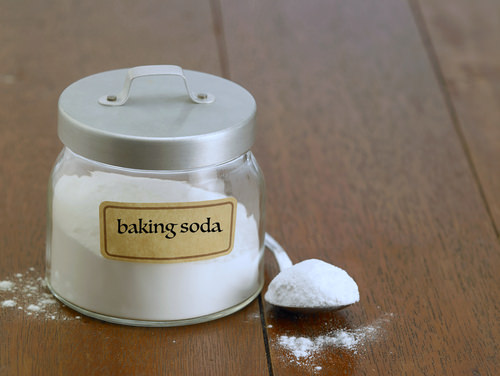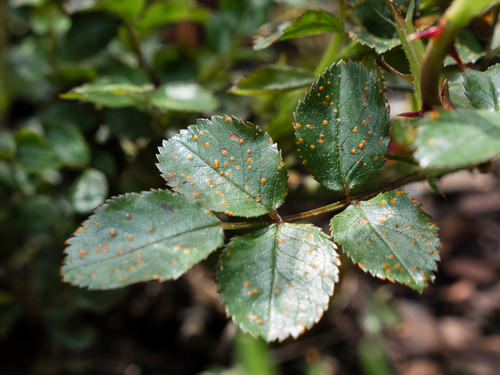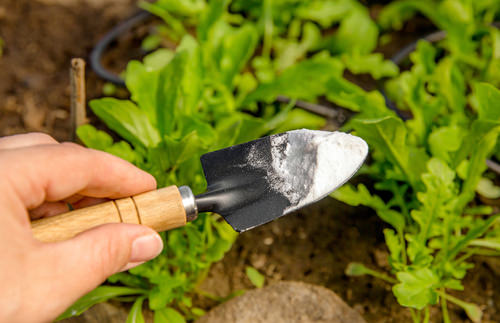Learn How to Kill Plant Fungus with Baking Soda easily! It is an organic method to take care of the issue from this kitchen ingredient.

Here’s all you need to know about How to Kill Plant Fungus with Baking Soda to make sure your green friends are safe from the issues of clubroot, black spot, blight, rust, downy and powdery mildew.
Have a look at some awesome baking soda uses in the garden here
Problems Caused by Fungi

As a study by WSU County Extension states, fungi are spore-forming, non-chlorophyte, eukaryotic (cells having true nuclei) organisms, and fungal infections cause general necrosis of host tissue, which often results in stunting, distortions, and abnormal changes in plant tissue and organs.
The most common sight of a fungal infection in plants is leaf spots. The typical fungal leaf spot will have a “bulls-eye-like” appearance, consisting of roughly concentric rings that may display zones of different colors.
Root-based fungi can kill the roots or cease the water-managing cells that result in plant wilting and death.
Have a look at the best Epsom salt uses for plants here
Efficacy of Baking Soda in Curing Fungal Infections in Plants

A study claims that sodium bicarbonate can inhibit the growth of 80% of all fungal isolates.
A report by the Cornell University, Ithaca, states that powdery mildew, caused by Sphaerotheca pannosa var. rosae, and black spot, caused by Diplocarpon rosae, can be significantly controlled by weekly sprays made with a solution of sodium bicarbonate.
Another study states that the application of baking soda reduces the development of powdery mildew fungus on leaves. It also helps to reduce the severity of fruit infections in plants.
Use it on plants like tomatoes, potatoes, cabbage, eggplants, and chayote.
Do you know you can use milk for plants? Find out how here
How to Kill Plant Fungus with Baking Soda?

The best way to do it is by making a foliar spray. You’ll need:
- One gallon of water
- 2 tablespoons baking soda
- 2-4 wee bit drops of mild liquid dish soap
- Clean spray bottle
Dissolve one tablespoon of baking soda in one gallon of water. Add liquid soap and stir the mixture thoroughly. Pour the solution into a clean empty spray bottle, shake well, and spray on the affected area. Repeat the application after 7-10 days if you notice the issues again.
If you find poor-quality flowers or leaf damage after using this spray, then reduce or remove the dish soap from this solution.
Note: Use the solution quickly and do not store it.
Have a look at some surprising pomegranate peel uses for plants here
Benefits of Killing Plant Fungus with Baking Soda
- It stops mold from growing on plants.
- Baking soda is eco-friendly and cheaper than commercial fungicides.
- It maintains the soil pH levels.
- Also deters insects like ants and caterpillars.
- Enhances the sweetness of tomatoes; good for eggplants and peppers as well.
- Retains the freshness of blooms and leaves.



Thank you for giving tips how to kill fungus on plants just using baking soda I will try it later on.
Thank you for sharing all your secrets of how to take care of the plants, wonderful information.
To kill mold, add 1/4 tablespoon of baking soda to a spray bottle containing water. Shake the bottle to dissolve the baking soda into the water. Spray the moldy area with the baking soda and water solution. Use a sponge or scrubbing brush and scrub the mold.
I’m confused by the article what do you do with the second tablespoon of baking soda?